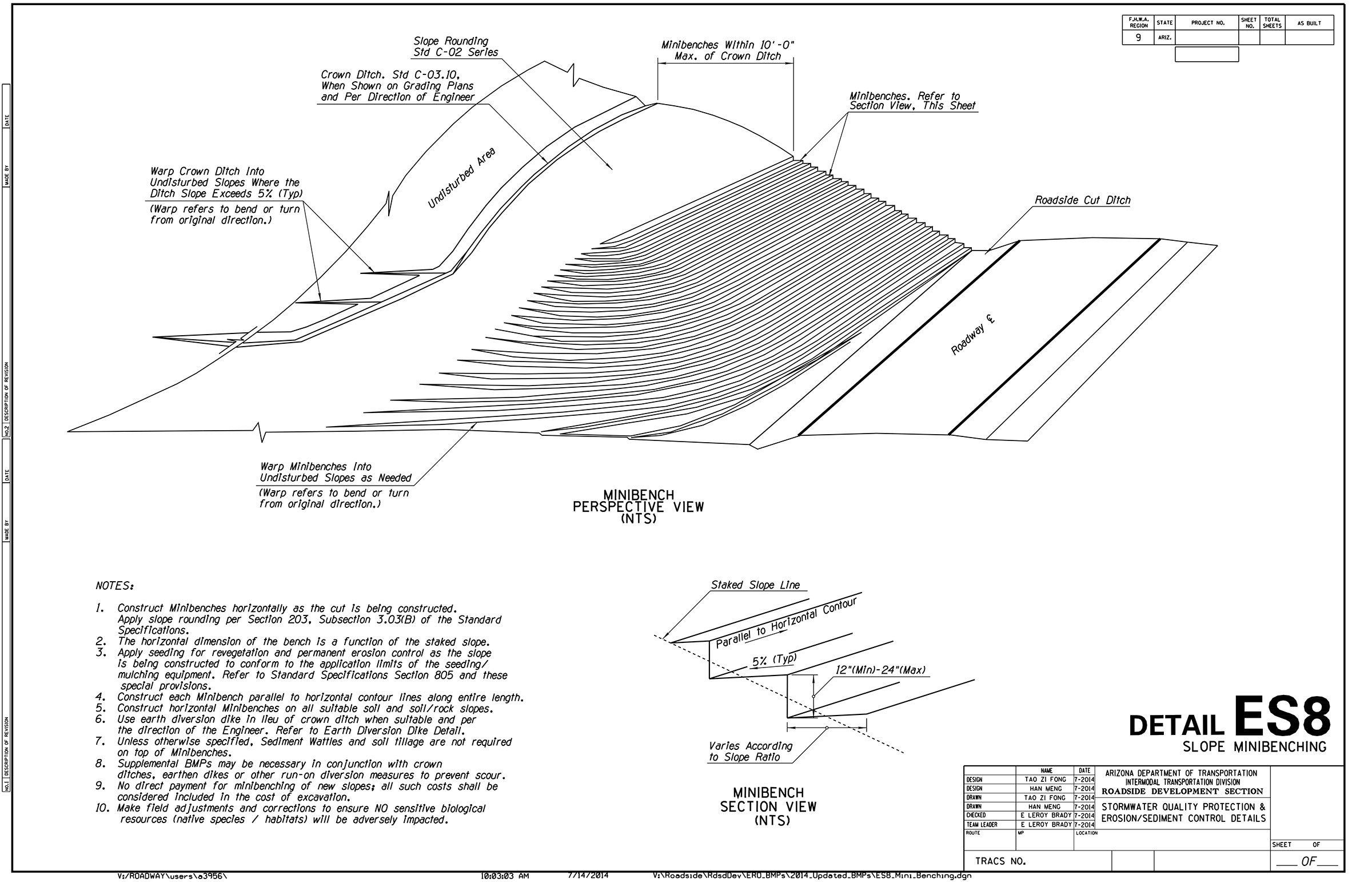Transportation Defined: Minibenches, a closer look
Transportation Defined: Minibenches, a closer look

Dirt has been a pretty popular topic for us.
We’ve let you know how we test it, move it, water it and even why we sometimes “paint” it green.
Now we want to explain why we bench it. More specifically, why we minibench it.
Does this topic sound familiar? We've actually covered minibenching before, but today we're taking a closer look...
When ADOT constructs a new road, makes an adjustment to a current road alignment or takes on a major road construction project, there’s often quite a bit of earthwork that happens. Soil and rock material can get dug up, cut into, moved around or filled in. The resulting roadside slopes are the product of precise planning and calculation (but that’s a blog post for another day!).
Minibenches can be cut into the soil on those slopes, and the result is a sort of stair-step design that you can see in the drawing above.

Taken on SR 188, these photos show an example of mini-benching. At left, the mini-benched slope just after construction. At right, the same slope several yeas later. Photos by Luis Colon.
Wondering why ADOT does that? Well, there is a good reason, and it has to do with establishing vegetation and preventing erosion.
ADOT’s Chief Landscape Architect LeRoy Brady explains that decades ago, cut slopes were left smooth, but rain would run right down, often bringing dirt and rock with it.
Today, many steps are taken to help prevent erosion and minibenching is just one of several grading techniques used.
Minibenching works like this: When a slope is first graded and shaped, it is cut into a series of benches or stair-steps. Once the grading is complete, the minibenched slope is seeded with vegetation that's indigenous to the area. The stair-step design initially works to slow the flow of rain water down the slope, but it also captures or harvests the rainwater to help establish the native seeding. The minibench helps to keep the seed up on the slope and create a planting area that allows the seed to germinate and take root to re-establish vegetation on the slope. The graded minibench provides the short-term erosion protection – while well-established vegetation provides long-term natural erosion control and protection.
“The fact that the vegetation has been established on those benches … it helps for the rest of the life of that slope,” said Brady, adding that, after a few years, the slope fills in and drivers don’t see the minibenches anymore.
Minibenching reestablishes the native vegetation along the highways so the roadside is more visually pleasing, but it’s not all about looking pretty. There’s a cost-savings factor too.
“A stable slope that stays there and doesn’t erode means you’re not having to clean the ditch, you’re not having equipment along the roadway and you’re not having that maintenance cost,” Brady said.
Visit our website to learn more about ADOT’s Roadside Development section.
Transportation Defined is a series of explanatory blog posts designed to define the things you see on your everyday commute. Let us know if there's something you'd like to see explained ... leave a comment here on the blog or over on our Facebook page!
